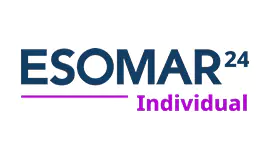Middle Ear Implants Market Overview
Middle implant ear is a small device inserted into the middle ear and coupled to ossicles. Middle ear implants are devices designed for those who suffer mild- moderate mix or sensorineural hearing loss and conductive hearing loss. Middle ear implant is an advanced technology for the conventional use of hearing aid. A middle ear implant is recommended for people suffering from earmould allergies, skin problems, ear infections, collapsed or closed ear canals, etc. It can also serve as an alternative to bone anchored hearing aid. The difference between middle ear implant and other hearing aid is that it do not require a speaker. Middle ear implant transmits sound to the middle ear through the microphone placed behind the ear. The microphone converts sound to mechanical vibration and is sent to floating mass transducer placed in the middle ear.
Middle ear implants are broadly classified as piezoelectric and electromagnetic. Piezoelectric products uses piezoelectric crystal, applied electric charge cause crystals to bend and the bend crystal generates electric charge that causes inner ear bones to vibrate. Electromagnetic product uses external microphone and send the signal through the coil and converts to magnetic field. Piezoelectric middle ear implant is expected to contribute major share to the overall middle ear implants industry. On the basis of type of hearing loss, market is segmented into conductive, sensorineural, and mixed.
Global middle ear implants market taxonomy
The global market is classified on the basis of the following segments:
Increasing Government Support in Developed Regions to Address Growing Prevalence of Hearing Loss to Augment Growth of Middle Ear Implants Market
Increasing concerns related to hearing loss is expected to drive growth of the market in middle ear implants. As per a WHO report, as of 2012, around 360 million people worldwide suffered from hearing loss, which accounts for around 5.3% of the world population. Out of the total hearing loss patient population, 91% were adults with children accounting for the rest. The increasing cases of hearing loss due to exposure to loud noise, trauma, viral infections, increasing geriatric population, and rising incidence of malformation of inner ear are expected to drive growth of the overall middle ear implants industry. Increasing government regulations for early screening, diagnosis and treatment of hearing problems further augments growth of the middle ear implant market. In the U.S., Medicaid regulates one such program called the Early and Periodic Screening, Diagnosis and Treatment (EPSDT) Program. EPSDT is mandated for children from birth to till age 21, which provides beneficiaries for early screening, diagnosis and treatment of hearing aid. In Canada, hearing loss is covered under ICD-9 389.1 (Sensorineural Hearing Loss), 389.0 (Conductive Hearing Loss)—an initiative by various governmental and non-governmental organizations to spread awareness about early treatment on hearing loss. This creates a highly conducive environment for growth of the global middle ear implants market. On February 6, 2016, Public Affairs & Campaigns of the U.K. initiated a campaign to protect audiology services. On February 25, 2015, WHO started “Make Listening Safe Initiative” to mark March 3, 2015 as Ear care day to draw focus towards danger of unsafe listening, promote safe practices and early treatment. Increasing urbanization and development are one of the major factors to drive middle ear implants industry. Despite impetus to market growth from increasing number of cases of hearing loss being reported worldwide, the availability of alternative treatments such as Bone-anchored devices and Cochlear implants are expected to hinder growth of the market.
North America and Europe are expected to hold maximum share of overall market, owing to growing disposable income and easy availability of middle ear implant device in these regions. On the other hand, Asia Pacific is projected to provide highly lucrative opportunities for market growth due to increasing geriatric population and growing number of cases of hearing loss reported each year.
Major middle ear implant products in the market:
Esteem Hearing Implant (Envoy Medical), MAXUM Hearing Implant (Ototronix), cochlear implant (CI) system (MED-EL Corporation), and Ossicular (middle ear) implant (Medtronic)
Major Players in the middle ear implants market
Major players involved in the middle ear implants market include Envoy Medical, Ototronix, MED-EL Corporation, Medtronic, CENTILLION, and Cochlear.
Key Developments
Share
Share
About Author
Manisha Vibhute is a consultant with over 5 years of experience in market research and consulting. With a strong understanding of market dynamics, Manisha assists clients in developing effective market access strategies. She helps medical device companies navigate pricing, reimbursement, and regulatory pathways to ensure successful product launches.
Missing comfort of reading report in your local language? Find your preferred language :
Transform your Strategy with Exclusive Trending Reports :
Select a License Type

Credibility and Certifications

860519526

9001:2015
27001:2022


Joining thousands of companies around the world committed to making the Excellent Business Solutions.
View All Our Clients